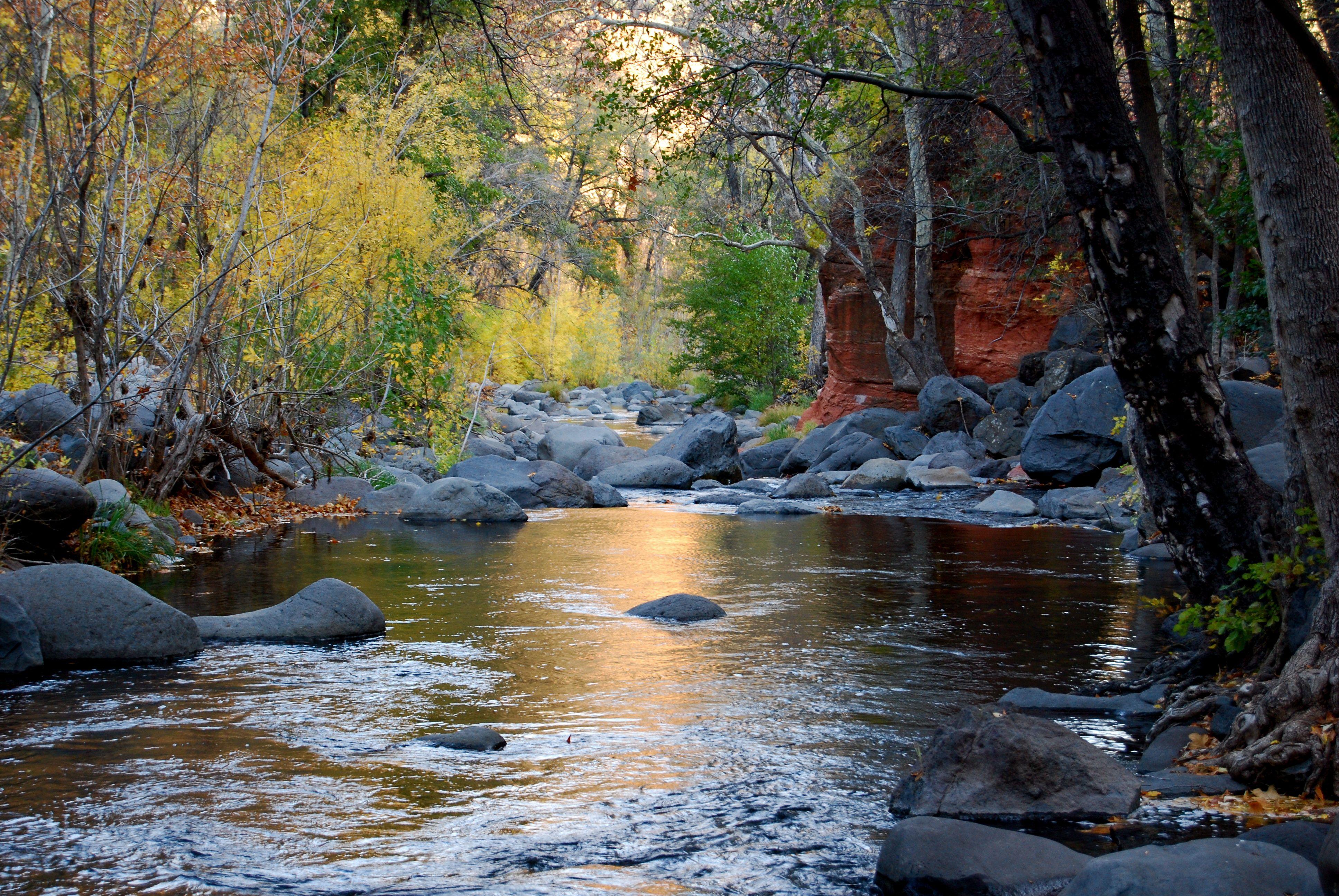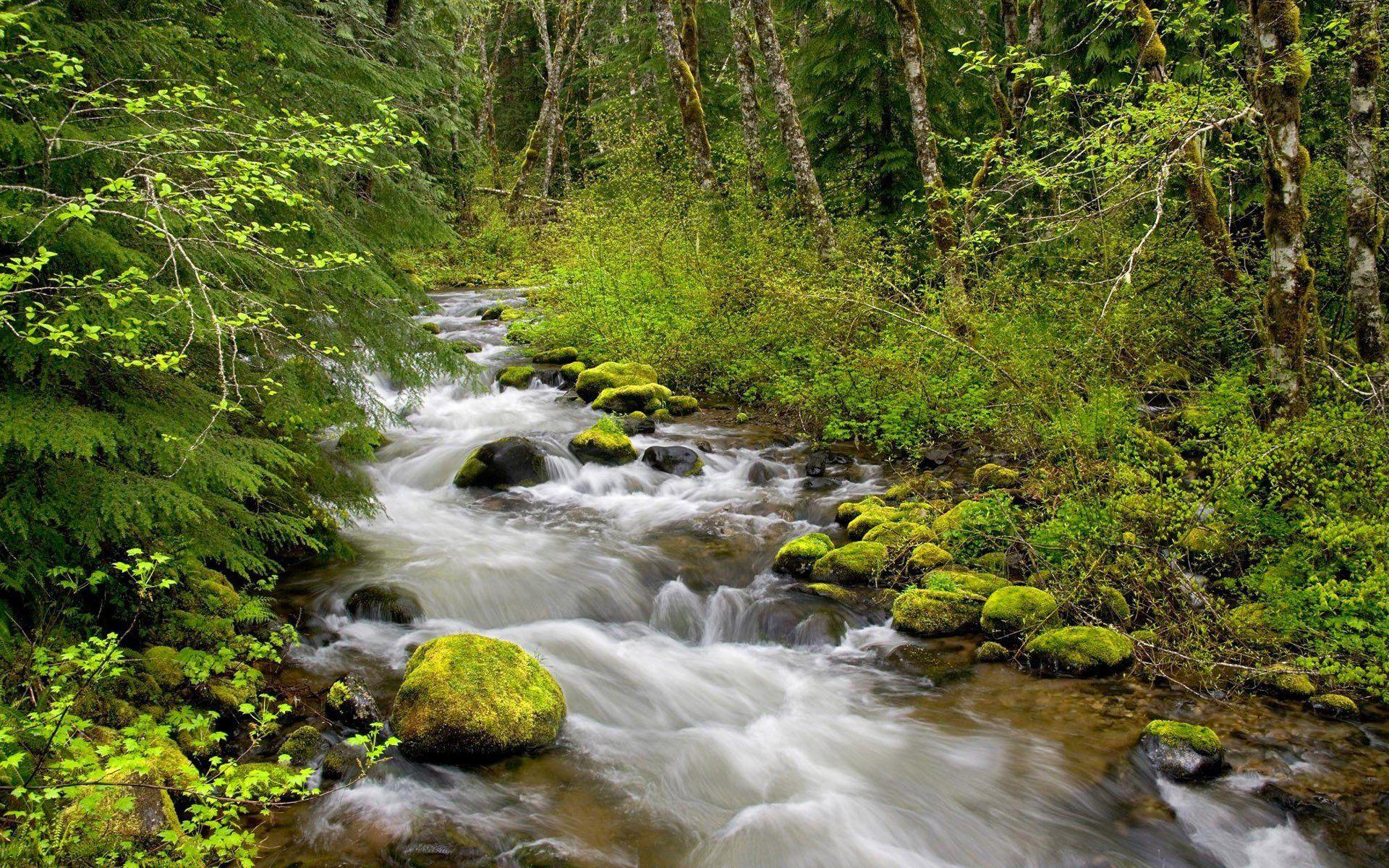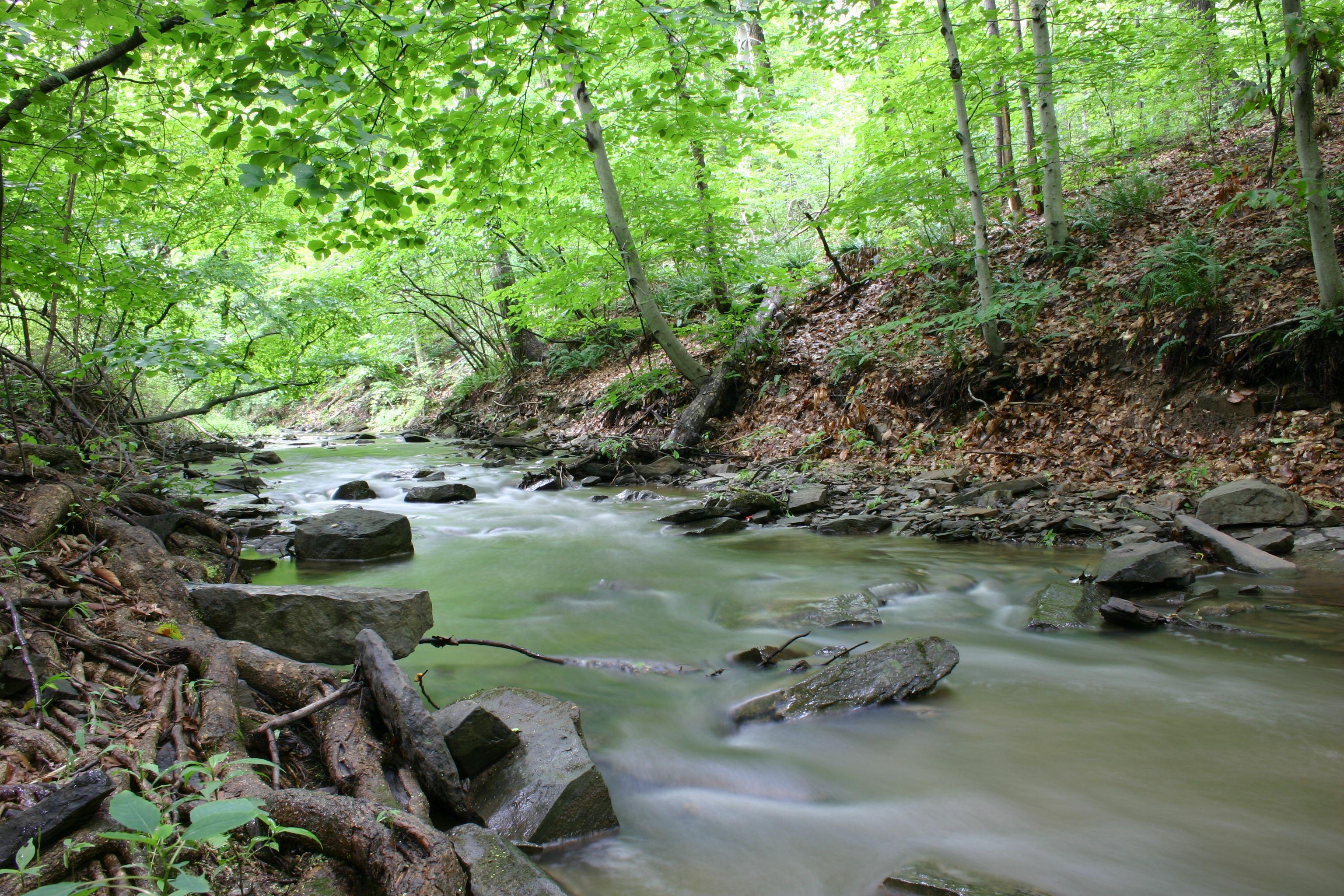Building roads near natural water paths, like creeks, can be a really interesting project, you know? It asks for a careful touch, especially when we think about how our construction might affect the environment around us. We're talking about more than just laying down asphalt or gravel; it's about making choices that protect the very water bodies these roads often need to cross or run alongside.
Consider, for instance, a small stream, which is, in a way, what a creek often is. My text describes a creek as a natural flow of water, usually smaller than a river, sometimes even feeding into one. It’s also called a brook, a fall, or a branch, depending on where you are. In the British Isles, a creek can even be a tiny tidal inlet, so it's a pretty varied term, actually. Building a road in such a spot means understanding these water features well.
So, when you're thinking about creek road designs, it's not just about getting from point A to point B. It's about creating something that works with nature, not against it. It's about ensuring the road is safe, lasts a long time, and doesn't mess up the natural beauty or health of the water. This involves a lot of thought about how water moves, what materials to use, and how to keep the land stable, very much so.
Table of Contents
- What Exactly is a Creek?
- Why Thoughtful Creek Road Design Matters So Much
- Key Considerations for Creek Road Designs
- Common Ways to Cross a Creek
- Integrating Nature: Lessons from Real Places
- Working with People Who Know Their Stuff
- Frequently Asked Questions About Creek Road Designs
What Exactly is a Creek?
To really get into creek road designs, it helps to know what we're dealing with, you know? My text tells us a creek is a natural flow of water, usually smaller than a river. It's often a branch that feeds into a bigger river. It’s the smallest in size, volume, and depth when you compare it to a river or a stream, so it’s a pretty distinct feature.
Sometimes, a creek can be a narrow spot where the sea comes quite a distance into the land, especially in places like the British Isles, where it’s called a small tidal inlet. But generally, in North America and Australia, it’s just a stream that’s smaller than a river. So, when someone says a creek runs through the property, they're talking about a small, flowing water body, more or less.
The distinction between a creek and a river can be a little tricky, my text says, because they are both water bodies and can look quite similar. But remember, a creek is typically the smaller, often shallower version, sometimes even just flowing for part of the year. This small size is actually very important when you're planning a road near it, very much so.
Why Thoughtful Creek Road Design Matters So Much
When you're putting a road near a creek, it’s not just about getting vehicles across. It's about a bigger picture. Poorly planned roads can cause a lot of trouble, like washing away in heavy rains, or messing up the natural homes for fish and other creatures that live in or around the water. So, good design is pretty key for everyone involved, you know.
For one thing, there’s the environment. Creeks are vital parts of our natural systems. They help move water, support plants and animals, and can even clean water as it flows. A badly designed road can lead to dirt and chemicals getting into the water, or it can change how the water flows, which can harm the whole natural setup. It's a rather delicate balance.
Then there's the safety and lasting quality of the road itself. A road that doesn't account for water flow or soil stability near a creek is a road that’s likely to have problems. It might flood, erode, or even collapse, which is obviously dangerous and expensive to fix. So, making sure the design is sound from the start saves a lot of headaches later on, honestly.
Key Considerations for Creek Road Designs
Designing a road near a creek involves thinking about several important things. It’s not a simple task, and each site presents its own unique set of challenges and opportunities. You really have to think about how everything interacts, so.
Minimizing the Environmental Footprint
One of the biggest concerns is how the road will affect the environment. When you build near water, there’s always a risk of erosion. This means soil washing away into the creek, which can make the water muddy and hurt aquatic life. It can also weaken the road's foundation, you know.
It's important to keep the natural edges of the creek as undisturbed as possible. Think about keeping plants along the banks, as they help hold the soil in place. Also, try to keep construction materials and waste from getting into the water. This is pretty basic but often overlooked, actually.
We also need to think about how the road might block or change the paths of animals that live near the creek. Fish might need to swim upstream to spawn, and other wildlife might use the creek banks to move around. So, any structure we put in place should allow for this movement, more or less.
Understanding Water Flow and Hydrology
Knowing how the water moves in the creek is absolutely essential. This means understanding how much water flows normally, and how much it might swell during heavy rains or snowmelt. If a road crossing isn't big enough for the water, it could cause flooding upstream or damage the road itself, very much so.
Engineers often study the creek's history of floods and its watershed – the area of land that drains into it. This helps them figure out the right size for things like culverts or bridges. It’s about predicting the "design flood," which is the biggest flood the structure should be able to handle without problems, you know.
The speed of the water also matters. Fast-moving water can cause more erosion and scour around structures. Sometimes, slowing the water down or directing it gently through the crossing is part of the design. This helps protect both the creek and the road, obviously.
Smart Material Choices
What you build with makes a real difference. Using materials that are stable and don't break down easily in water is a good idea. Concrete and steel are common, but sometimes more natural options can work too, especially for smaller roads or paths. For instance, some people use large, stable rocks, like the "rocky mt" wood found around Cache Creek, as a base, you know.
Permeable surfaces, which allow water to soak through rather than run off, can be good for parts of the road not directly in the creek. This helps reduce runoff and lets water filter naturally into the ground. It's a way to work with the natural water cycle, basically.
Also, consider where your materials come from. Sourcing local materials can reduce the environmental impact of transport. And always make sure the materials won't leach harmful chemicals into the water over time. It’s a pretty important detail.
Permits and Rules to Follow
Building anything near a waterway almost always means getting permission from various government agencies. There are rules about protecting water quality, wetlands, and endangered species. These rules are there to keep our natural resources safe, you know.
You might need permits from local, state, and even federal environmental bodies. The process can be a bit involved, often requiring detailed plans and environmental assessments. It’s really important to start this process early, as it can take quite some time, you know.
Ignoring these rules can lead to big fines, project delays, or even having to tear down what you've built. So, understanding the regulations and working with the authorities is a critical part of any creek road design project, honestly.
Long-Term Care and Keeping It Up
A road isn't just built and then forgotten. Especially near a creek, regular checking and upkeep are essential. This means looking for signs of erosion, blockages in culverts, or damage to bridge supports. Small problems can become big ones if left alone, you know.
Clearing debris from culverts after storms, repairing any cracks or erosion on the road surface or banks, and maintaining vegetation are all part of the job. A well-maintained road will last much longer and cause fewer environmental issues over time, obviously.
Planning for maintenance from the very beginning of the design process is a smart move. Thinking about how easy it will be to inspect and repair the road can influence the design choices you make. It’s a rather practical approach.
Common Ways to Cross a Creek
When you need to get a road across a creek, there are a few main ways to do it, each with its own good points and things to watch out for. The choice often depends on the creek's size, how much water flows, and what kind of traffic the road will see, more or less.
Culverts: The Pipe Approach
Culverts are basically pipes or box-shaped structures that go under the road, allowing the creek to flow through. They are pretty common for smaller creeks, like the little creek someone might drive to. They can be made of metal, concrete, or plastic, you know.
They are generally less expensive and quicker to install than bridges. However, if they are too small, they can get clogged with debris, causing water to back up and potentially flood the road or surrounding land. They can also create a barrier for fish trying to move up or down the creek, which is something to consider.
Proper sizing and placement are really important for culverts. They need to be big enough to handle high water flows and installed in a way that doesn't disrupt the creek bed too much. Sometimes, multiple culverts are used side-by-side for wider flows, you know.
Bridges: Spanning the Water
Bridges lift the road over the creek entirely, allowing the water to flow freely underneath. They are usually chosen for larger creeks or rivers, where a culvert wouldn't be big enough, or where maintaining natural flow is a top priority. My text mentions a river being larger than a creek, and bridges are often for those bigger crossings, so.
Bridges are generally more expensive to build than culverts, and they take longer to construct. But they offer less interference with the creek's natural path and aquatic life. They also tend to be more resilient to flooding, as they don't block the water flow in the same way a culvert might, you know.
There are many types of bridges, from simple timber structures for private roads to complex concrete or steel designs for public highways. The design needs to consider the weight of traffic, the span needed, and the stability of the soil on both sides of the creek. It’s a rather involved process.
Low-Water Crossings: Simple Paths
Also known as fords, low-water crossings are simply sections of road built directly across the creek bed. They are designed to be submerged during periods of high water. These are usually for very small creeks or for roads that don't see much traffic, like a path to a remote property, you know.
They are the least expensive option and can be quite simple to build. However, they are only usable when the water level is low, which can be a real inconvenience during wet seasons. They also have a higher potential for erosion and can disrupt the creek bed more directly than other options, so.
If you're considering a low-water crossing, it’s essential to think about how often the creek will be impassable and if that’s acceptable for the road’s purpose. They are generally not recommended for public roads or where consistent access is needed, honestly.
Integrating Nature: Lessons from Real Places
Thinking about creek road designs means looking at how nature already works. My text mentions several creeks that can inspire us. For instance, the "very pretty Russian olive bowl turned by Wayne at Deer Creek" suggests an area where natural beauty and resources are valued. A road near Deer Creek might aim to preserve that aesthetic, you know.
Then there’s Cache Creek and Hat Creek, where "rocky mt" wood grows. This tells us about the local geology and plant life. A road design in such an area might use local stone for stability or integrate native plants into its landscaping to help with erosion control and blend into the surroundings, very much so.
Even the idea of following "Austin Creek for a few miles" implies a road that runs alongside, rather than just across, a waterway. This kind of design needs careful planning to prevent runoff from the road reaching the creek and to maintain the stability of the creek banks. It’s about creating a path that coexists, rather than dominates, the natural environment, apparently.
The carver who sold figures on his father's ferry across the White River in the north west, while a river, still shows how people interact with water bodies for commerce and travel. Roads near such places need to support human activity while respecting the water as a living system. It's a balance, really.
Working with People Who Know Their Stuff
Unless you're an expert in hydrology, civil engineering, and environmental regulations, it’s a really good idea to get help. Professionals who specialize in these areas can help you avoid costly mistakes and ensure your creek road design is safe, lasting, and environmentally sound. They know the rules and the best ways to build, you know.
Look for engineers who have experience with waterway crossings and environmental consultants who understand local ecosystems and permitting requirements. They can conduct surveys, analyze water flow, and design structures that fit the specific conditions of your creek. This kind of expertise is pretty invaluable, honestly.
Sometimes, getting a team together that includes a surveyor, an engineer, and an environmental specialist is the best approach. They can work together to create a plan that addresses all aspects of the project. It’s a bit of an investment upfront, but it can save you a lot of trouble and money down the line, so.
You can learn more about sustainable land use on our site, and also find information about environmental best practices for construction projects. These resources can give you a starting point for understanding the bigger picture of responsible development.
Frequently Asked Questions About Creek Road Designs
Here are some common questions people have when thinking about building roads near creeks:
How do you cross a creek with a road?
You typically cross a creek with a road using either a culvert, which is like a large pipe or box structure that goes under the road for the water to flow through, or a bridge, which lifts the road over the creek entirely. For very small, seldom-used crossings, a low-water ford might be an option, but it means the road will be impassable during high water. The best choice depends on the creek's size, how much water flows, and how much traffic the road will carry, you know.
What is the best way to build a road over water?
The "best" way really depends on the specific situation, but generally, building a road over water involves minimizing disturbance to the waterway. This often means using a bridge, as it allows the water to flow naturally underneath without much interruption. If a culvert is used, it should be properly sized to handle high water flows and designed to allow fish and other aquatic life to pass through. The goal is always to maintain the natural integrity of the water body as much as possible, honestly.
What permits do I need to build a road near a creek?
Building a road near a creek usually requires several permits from different levels of government. You'll likely need permits from local authorities, like your county or city planning department, for land use and construction. State environmental agencies will almost certainly have requirements related to water quality and wetlands. Depending on the creek's size and whether it's considered a "navigable waterway," federal permits from agencies like the U.S. Army Corps of Engineers might also be necessary. It's a complex process, so checking with local authorities early is key, very much so.



Detail Author:
- Name : Mr. Elias Brakus IV
- Username : nelson11
- Email : tianna.zieme@robel.com
- Birthdate : 1993-07-20
- Address : 723 Windler Bypass Dennisburgh, NM 56655
- Phone : 283.581.4094
- Company : Padberg-Hackett
- Job : Refractory Materials Repairer
- Bio : Ducimus libero ut rerum ipsa nam incidunt. Dolore est dolores animi molestiae omnis aut enim. Debitis rerum labore quasi quia eius consequatur repellat.
Socials
instagram:
- url : https://instagram.com/bennie_id
- username : bennie_id
- bio : Mollitia ut excepturi assumenda ut veritatis enim. Veniam labore rerum qui quas.
- followers : 3175
- following : 2149
twitter:
- url : https://twitter.com/ebertb
- username : ebertb
- bio : Nihil ex molestiae non enim quo. Saepe quo unde inventore ut quam. Reiciendis natus voluptates dolores. Eveniet et quis in quas ex et. A ut in labore quia.
- followers : 3334
- following : 1641
linkedin:
- url : https://linkedin.com/in/ebert2009
- username : ebert2009
- bio : Quidem eius quisquam autem quae.
- followers : 1753
- following : 1959
tiktok:
- url : https://tiktok.com/@bennie_dev
- username : bennie_dev
- bio : Laudantium ad voluptatem est dolores et error vel.
- followers : 473
- following : 37



























